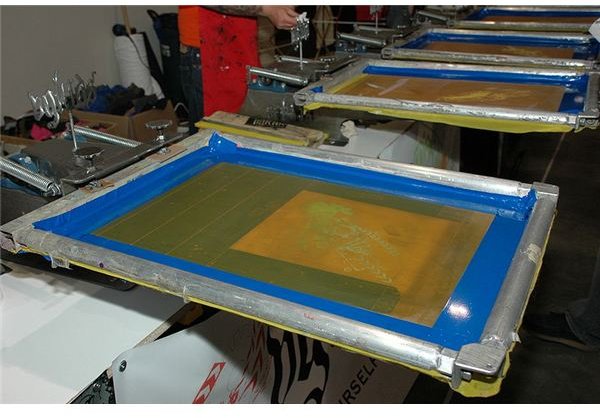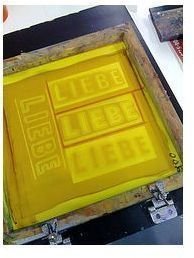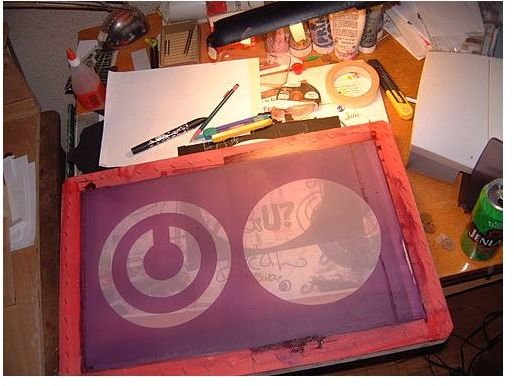Screen Printing at Home: Learn What Supplies You Need, How Much They Cost, and Where to Get Them
There are a lot of reasons why you might want to start screen printing at home. For one, you might find that there are no local print shops next to you and the overall cost will be cheaper. Sometimes small companies and non-profit organizations find it to be far cheaper to create their goods by themselves rather than pay someone else to do it for them.
Another reason people start screen printing at home is because they would like to provide their own artwork to people on merchandise such as t-shirts, hoodies, and more. Lastly, screen printing can be a fun project by itself, and you might simply want to learn how to do it to create a fun keepsake.
But what do you need to get started with screen printing? First and foremost, you should be familiar with the process. Screen printing refers to the process by which you use a mesh stencil and ink or paint to transfer the image to another surface. You’re most likely familiar with screen printed shirts and other fabric goods.
The advantage of screen printing is that the results are long lasting and very professional when done correctly, long outlasting other methods such as fabric markers or printable transfers. However, because you do create a higher quality result, the startup costs of screen printing and the time involved are significantly higher than methods like fabric markers or printable transfers. Still, you’ll likely find the time and effort are worth it!
Screen Printing at Home: What You’ll Need

Mesh Fabric: First and foremost, you’re going to want to head out to your local craft supply store or fabric store and look for an appropriate piece of mesh (or the “screen” in screen printing) that will be used for the base of your stencil. Yes, there is specialist mesh and complete mesh screens that you can get a hold of, but be prepared to pay quite a bit for them. Visiting your local fabric store and finding a fine nylon fabric, mesh-net curtain, or organza will likely be cheaper if you don’t mind doing a little extra work. A good way to check if it will fit your needs is to hold it up to the light and check if you can see little squares - if you can, you’ve found your mesh! These will vary in price, but normally do not exceed $3.75 a yard.
Wooden Frame (and et cetera): You’re going to need to buy or create a wooden frame that will hold your mesh and create a stable stencil for your design. If you’ve got a small saw handy, you can create it out of small wooden pieces. If you’re not the type to measure twice and cut once, you can always head to a local art supply store and pick up the cheapest stretched canvas you find and cut the canvas to salvage the frame. You’ll also need a staple gun (the kind commonly used for upholstery) to stretch the fabric and hold it over the frame. All and all, this will probably set you back - at most - $5-$20.

Photosensitive emulsion (or photo emulsion): There’s no substitute for the real thing, and if you’re looking to create a professional and reusable stencil, you’ll have to purchase it, either from an art supply store or online. Photo emulsion hardens when exposed to ultraviolet light (most home kits are designed to cure in the sunlight, but a cheap UV bulb or even a halogen flood light can help out those night owls who are looking to get started), which allows you to create a sharp, reusable stencil.
Costs for photosensitive emulsion vary from $10-$90, depending on brand, quantity, and quality. If this is your first (or possibly only) attempt, try going for a lower to mid-price range and a lower quantity of emulsion.

Squeegee: Don’t worry about breaking the budget here! Anything with a flexible, but fairly solid rubber blade will do fine - you can typically find these at megamarts, hardware stores, and sometimes even the local dollar store. You should be able to find one under five dollars.
Acetate: Acetate (or more correctly cellulose acetate) is a clear film that you can draw on. The parts that you do not draw on will allow sunlight to easily pass through, which will create the stencil when you lay it on your photo emulsion covered screen. You can buy this online or at art supply stores for around $3.50-$4.00 for a sheet that is around 40 by 40 inches.
Credits
References: Author’s experience with screen printing & design
Image References:
https://commons.wikimedia.org/wiki/File:2005_squeegee_sponge_chalk.jpg
My first photo emulsion screen by Philip - https://www.flickr.com/photos/philipyk/2776431585/
https://commons.wikimedia.org/wiki/File:Maker_Faire_2008_San_Mateo_246.JPG
https://commons.wikimedia.org/wiki/File:TeeshirtCopyleft_cadre.jpg
